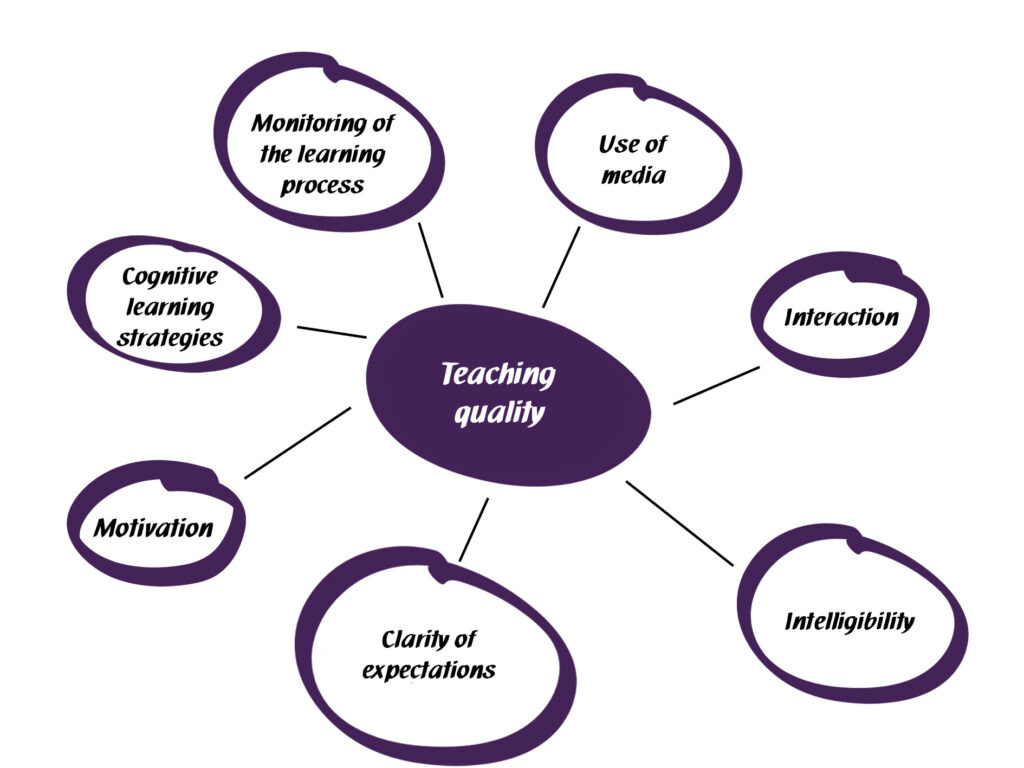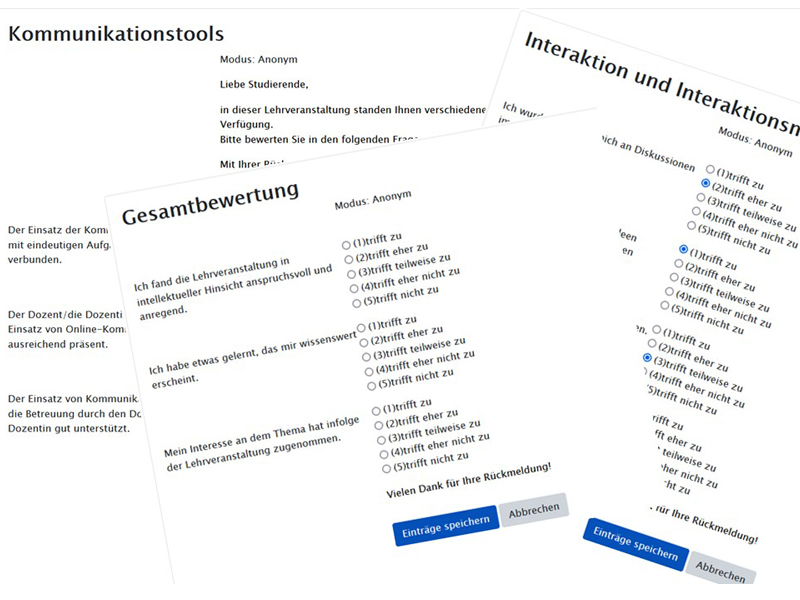Once again, in the winter semester 2021/22, many universities and colleges had to quickly shift to offering online courses. For the teaching evaluations at the end of the semester, however, there are often no appropriate instruments available which are suited to teaching in an online format. The construction set presented here can help.
Evaluation through surveying students has become something of a standard at universities. We have already pointed out various problems and stumbling blocks inherent in this quantitative approach in our post on the Teaching Analysis Poll (TAP). Even so, student feedback on the quality of courses is an essential factor for the development of quality in courses and instruction.
But even when a majority of classes are taught online, it can be difficult to find a questionnaire that can provide valid feedback for one’s own classes. The instruments available at the faculties are usually designed for the evaluation of in-person classes. Many instructors therefore switch to creating their own forms. But in doing so, the wheel does not have to be reinvented.
In a construction set evaluation [German Version only], we have collected items from four different proven instruments:
- SEEQ (Marsh, 1982) – a classic evaluation tool
- HilVe (Rindermann, 2009) – something of a standard in the German-speaking world
- Fradov (Koch, 2004) – a less wide-spread but theoretically well-founded instrument
- CeDis (Reinhardt, 2008) – various forms for evaluating digital learning environments from the FU Berlin.
The result is a collection of 74 thematically grouped items, representing a wide spectrum of teaching quality.
How to use the construction set for your course evaluation
#1 Set a content focus
The central question in the evaluation of courses is what characterises “good teaching”. Figure 1 gives you an overview of which categories of teaching quality can be assessed with the construction set.

Choose a maximum of 4 categories which were most important to you in your respective course and which best correspond to the framework conditions and objectives of your course.
#2 Compile the questionnaire
Then select the items from the Construction Set Evaluation [German Version only] that reflect your categories. These can then be transferred to your preferred evaluation tool.
We can offer the construction set directly to all instructors who use Moodle as a learning platform for embedding in the activity “Feedback”.
- For this, download these templates [German version only] to your computer and extract the zip file on your computer.
- Switch to the Moodle course in which you would like to create the evaluation sheets.
- Under “Course administration”, select the option “Retrieve”. Drag the downloaded and extracted template into the import field for backup files.
- Select “Retrieve”.
- Follow the retrieval process: (1) Select the course in which the template is to be embedded. To do so, use the “Search” function. (2) Confirm the next query with “Continue”. (3) Select the final option “Perform retrieval”.
- The selected items are inserted. Finally, place them into the desired position within the course.
- Repeat the above steps from Step 4 for all topic areas that you would like to use for your evaluation sheet.

#3 Carrying out the survey
Experience has shown that online surveys often have fewer responses than when they are carried out in person. In order to increase participation in online evaluations, it is helpful to plan 10 minutes in a live session for the evaluation. For this, explain in advance why student feedback is important to you and what will happen with the results.
#4 Reporting the results
It is recommended to report the results to the students – who indeed participated in the evaluation to a significant degree. This is also a helpful means for receiving more differentiated indications for improvement from the standardised results. At the same time, this avoids the appearance that teaching evaluations are a mere ritual.
The following rules should be considered when given feedback to students:
- Only select important aspects which you are also able to influence.
- Report both positive and negative aspects.
- Do not justify yourself. Feedback is not about accusations and defence, but rather a constructive conversation to improve teaching quality.
- Report consequences. In personal conversations with students, it is possible to clarify again what interventions will follow and whether these are appropriate from the point of view of the participants.
#5 Deriving interventions
Evaluations alone may be an essential prerequisite for quality assurance in teaching, but on their own they cannot affect any improvement in instruction. What is much more important is that, following the evaluation, starting points for improving teaching quality are sought. The following steps can be helpful in this:
Discuss the results with colleagues.
Use the offer of a teaching consultation. Most institutions of higher education offer individual consultations. In various didactic training courses for higher education (e.g. at the ZHW at the University of Regensburg) you can find inspiration for further developing your courses.
References
Koch, E. (2004). Gute Hochschullehre. Theoriebezogene Herleitung und empirische Erfassung relevanter Lehraspekte. Hamburg: Dr. Kovac.
Marsh, H. W. (1982). SEEQ: a reliable, valid, and useful instrument for collecting students’ evaluations of university teaching. British Journal of Educational Psychology, 52, 77–95.
Reinhardt, J. (2008). Online-Befragungen. Selbstständige E-Learning-Evaluation durch Lehrende. Center für Digitale Systeme (CeDiS) – E-Learning, E-Research, Multimedia. https://www.cedis.fu-berlin.de/services/e-learning/werkzeuge/fragebogen/index.html#Baukasten
Rindermann, H. (2009). Lehrevaluation – Einführung und Überblick zu Forschung und Praxis der Lehrveranstaltungsevaluation an Hochschulen. Mit einem Beitrag zur Evaluation computerbasierten Unterrichts. Landau: Empirische Pädagogik.
Suggestion for citation of this blog post
Hawelka, B. (2022, January 13). Click & collect – Teaching evaluation as a modular construction set. Lehrblick – ZHW Uni Regensburg. https://doi.org/10.5283/ZHW.20220113.EN

Birgit Hawelka
Dr. Birgit Hawelka is a research associate at the center for University and Academic Teaching at the University of Regensburg. Her research and teaching focuses on the topics of teaching quality and evaluation. She is also curious about all developments and findings in the field of university teaching.





